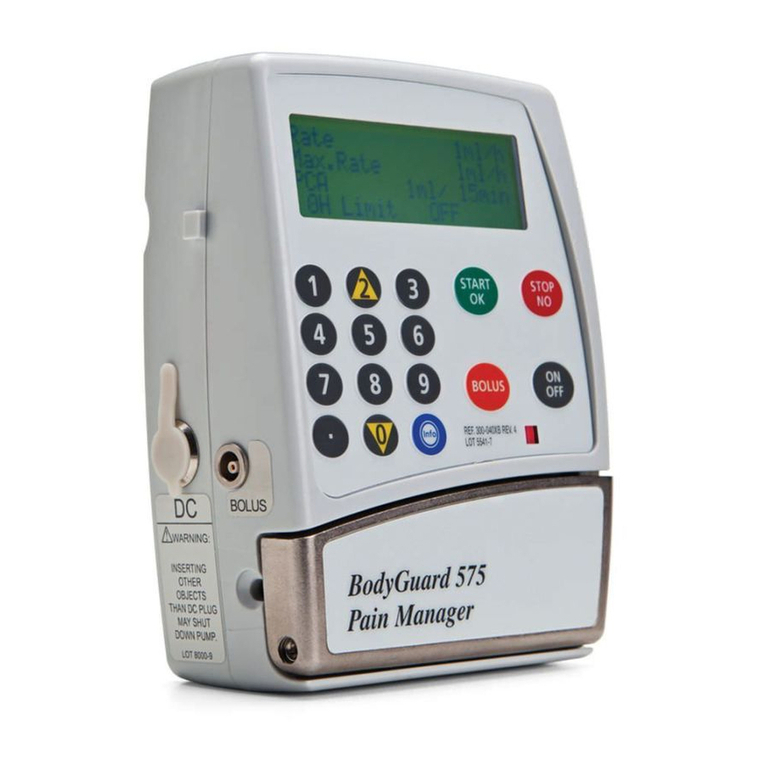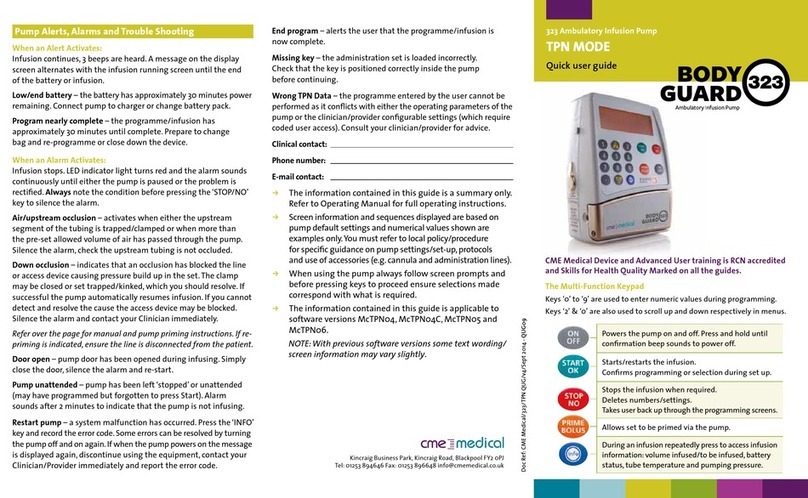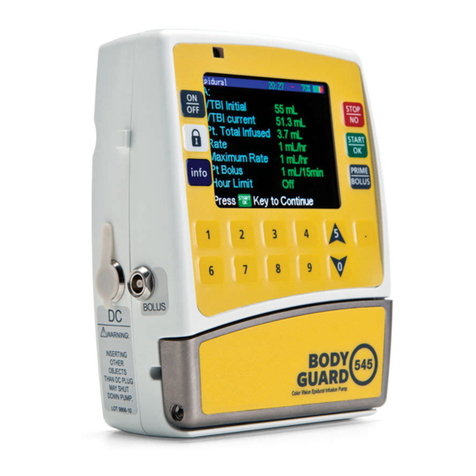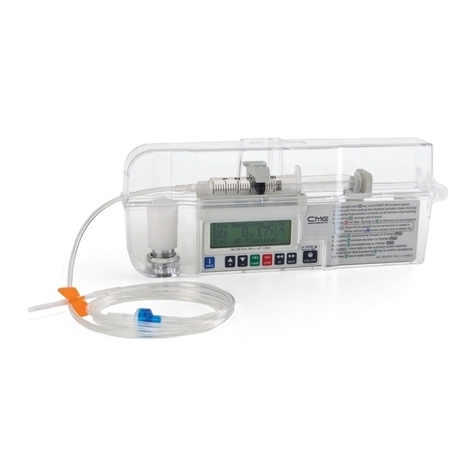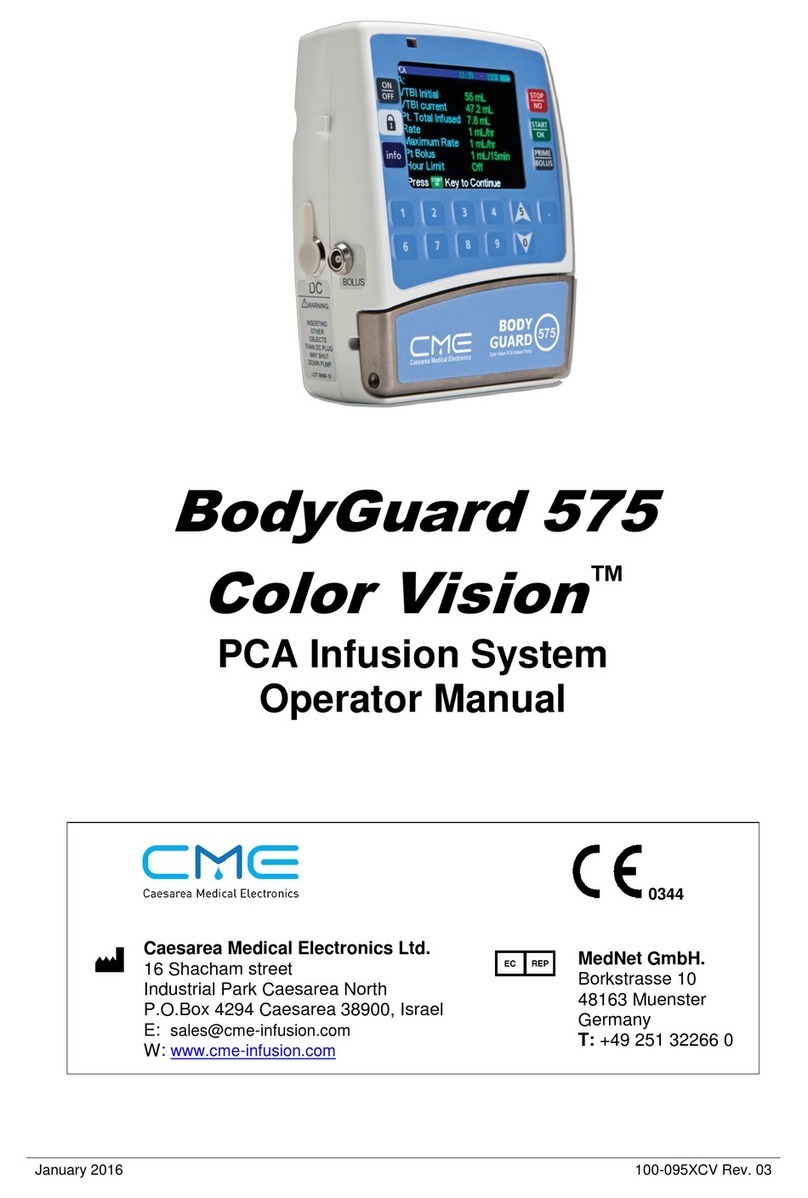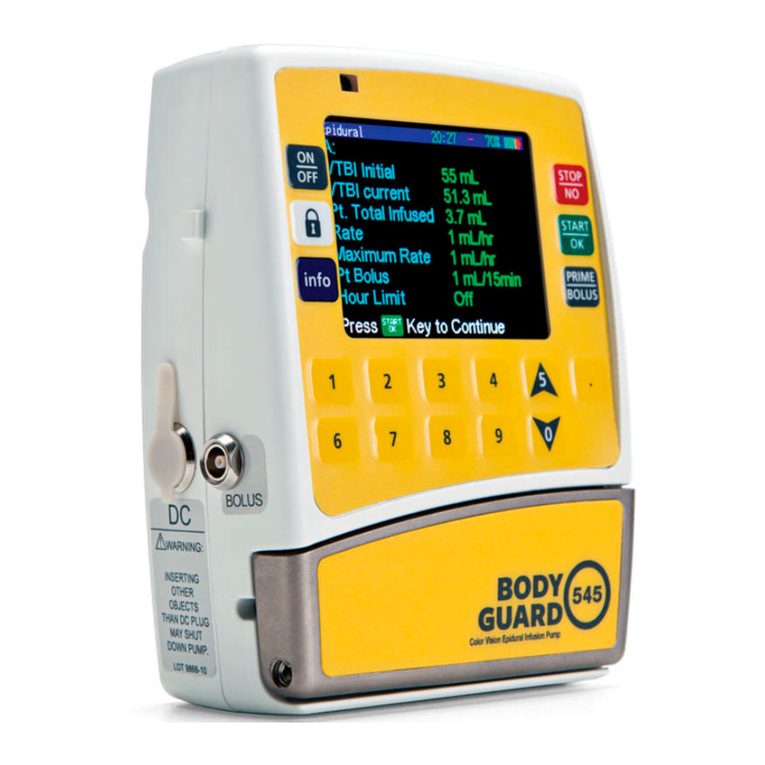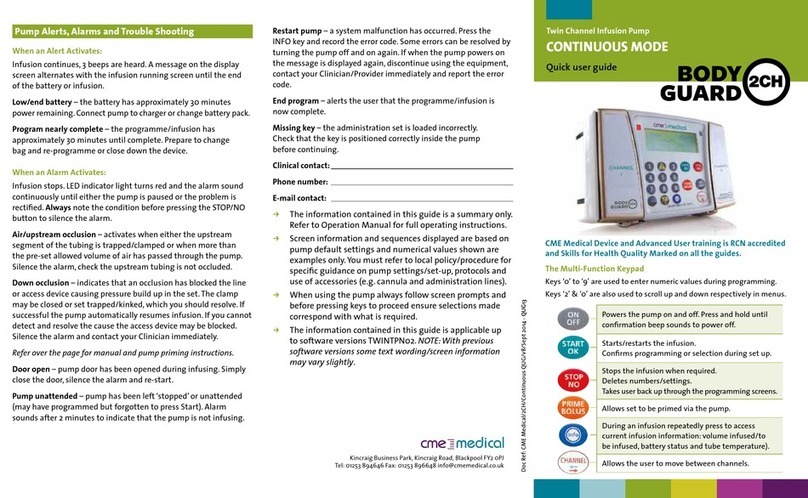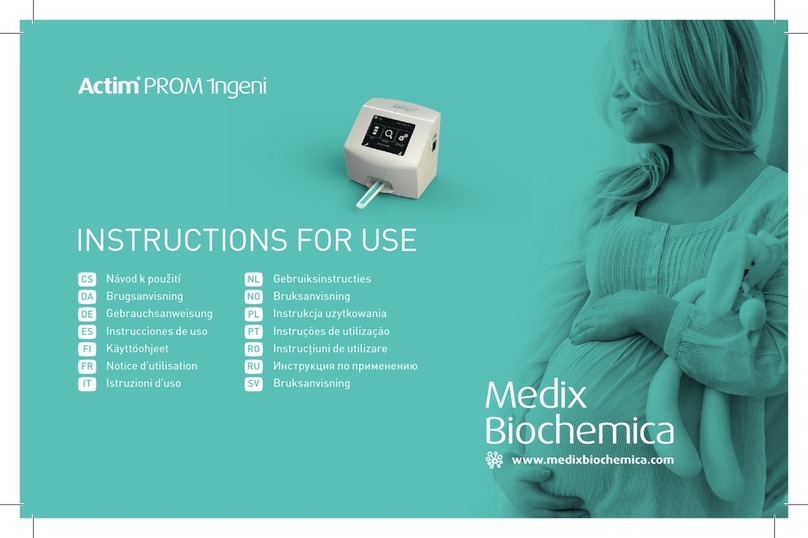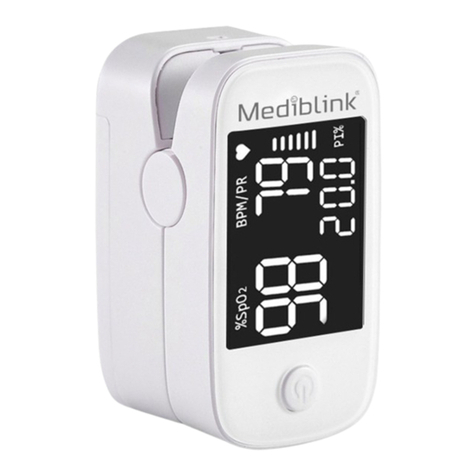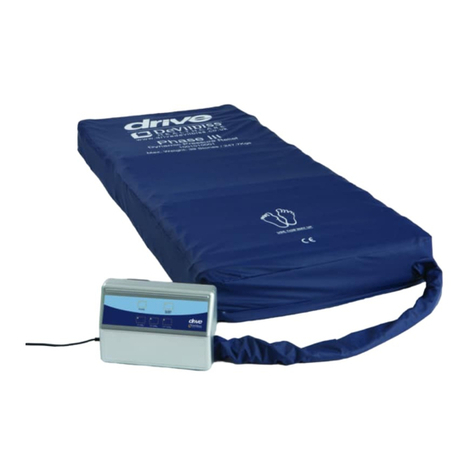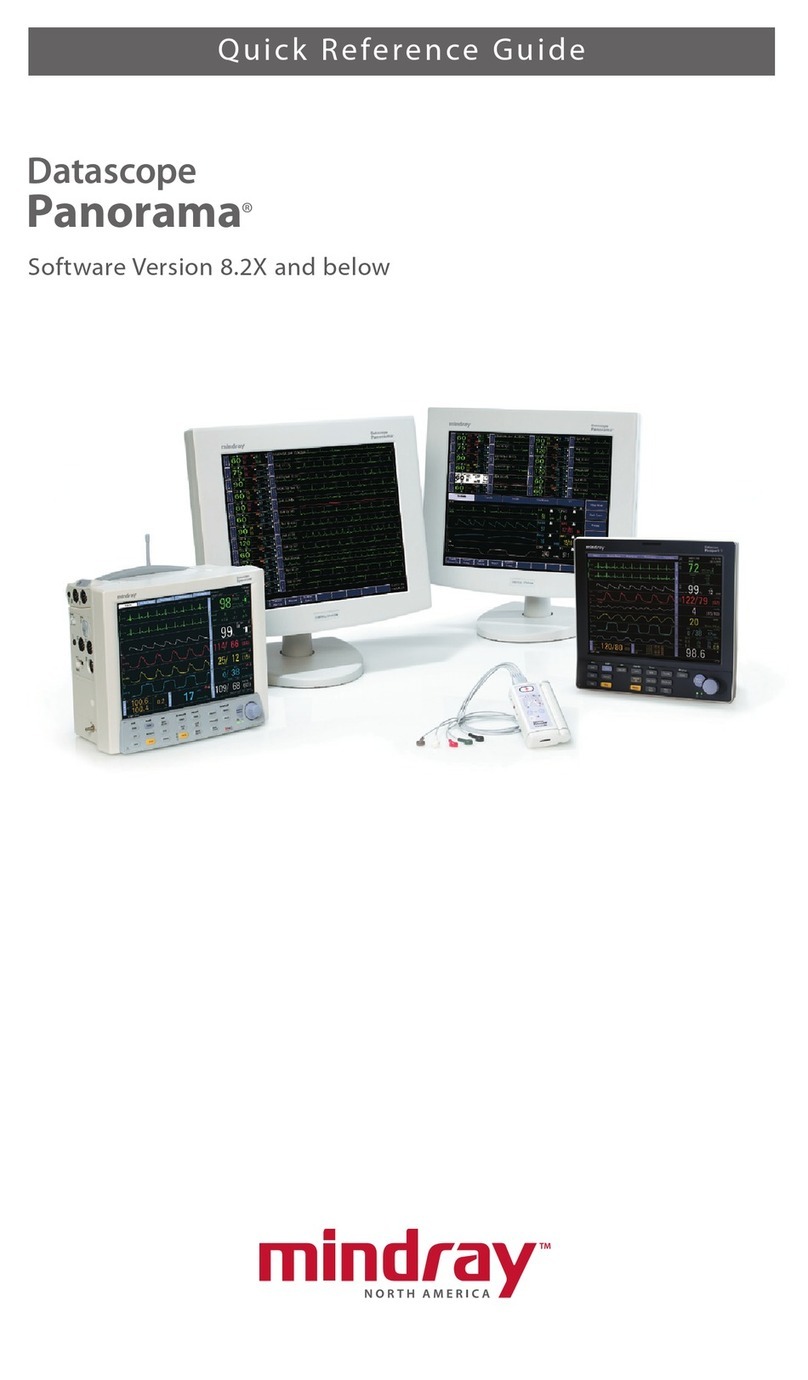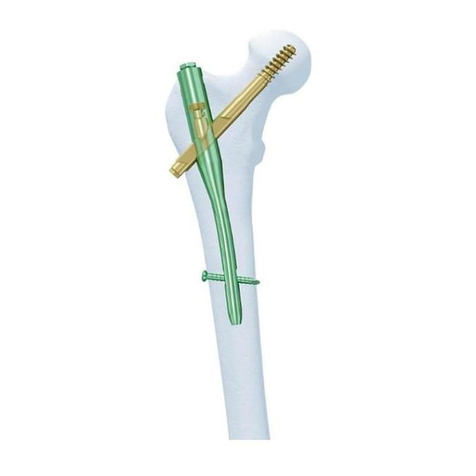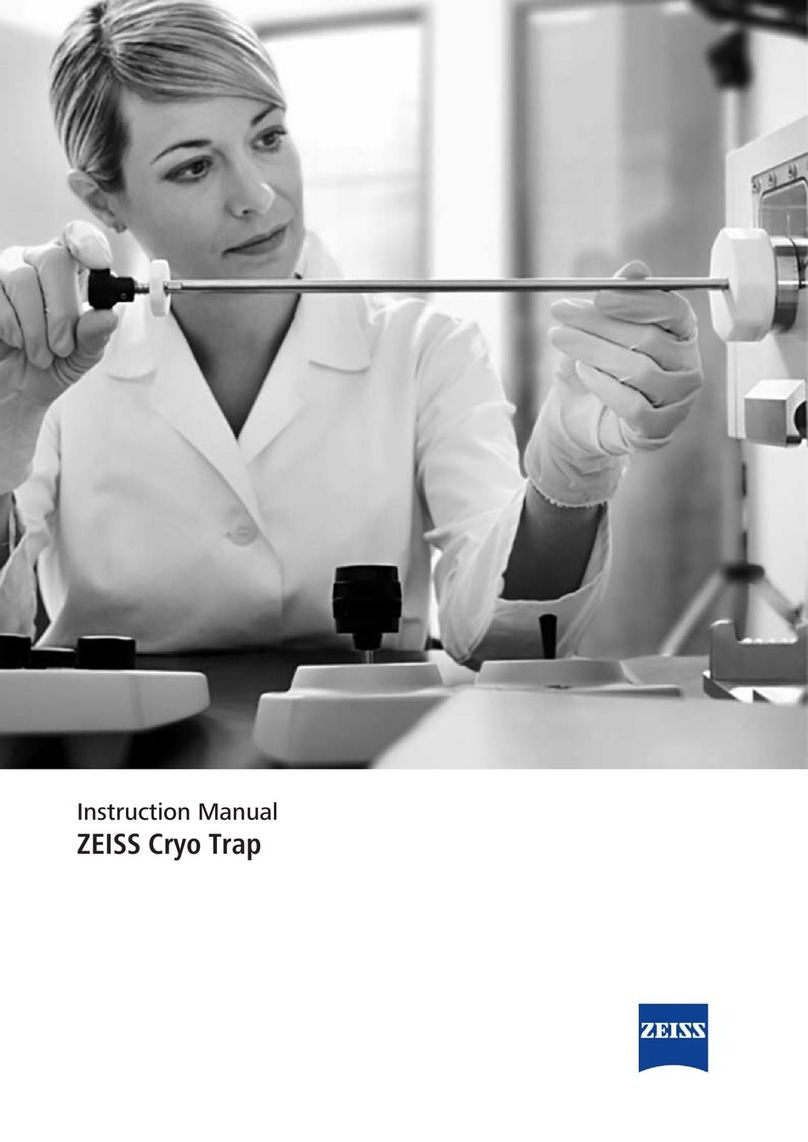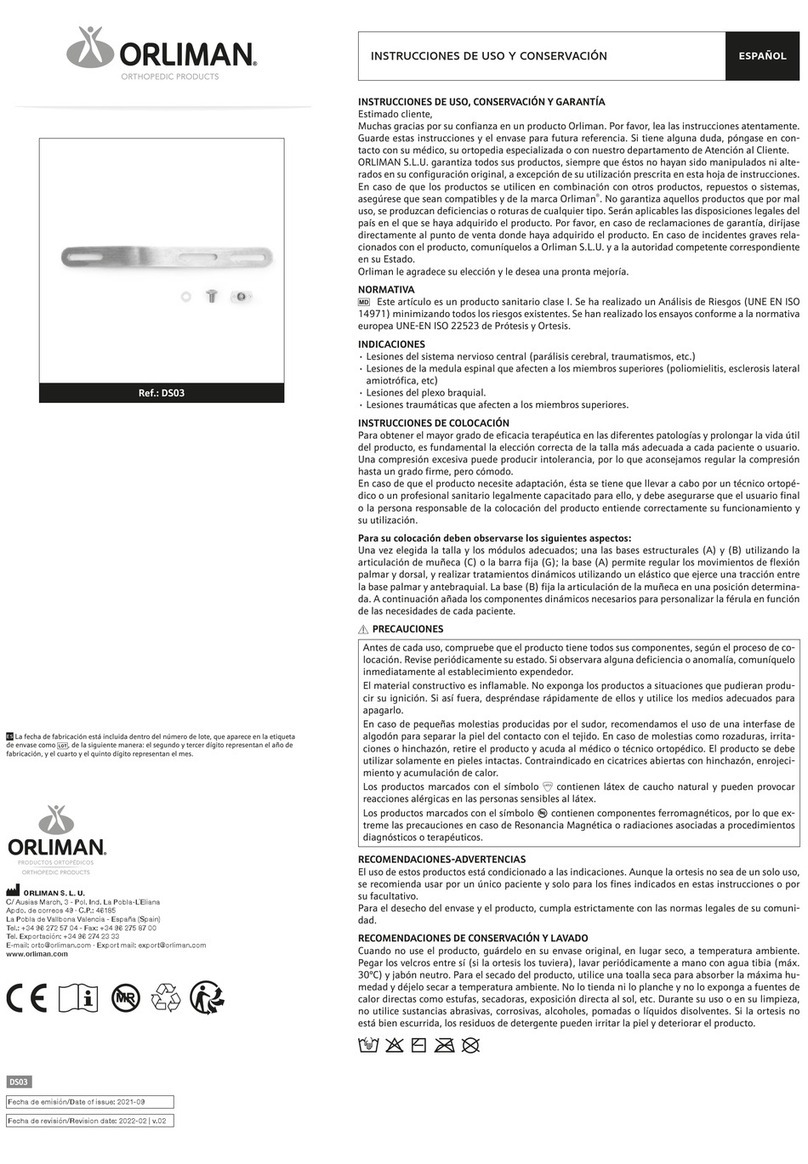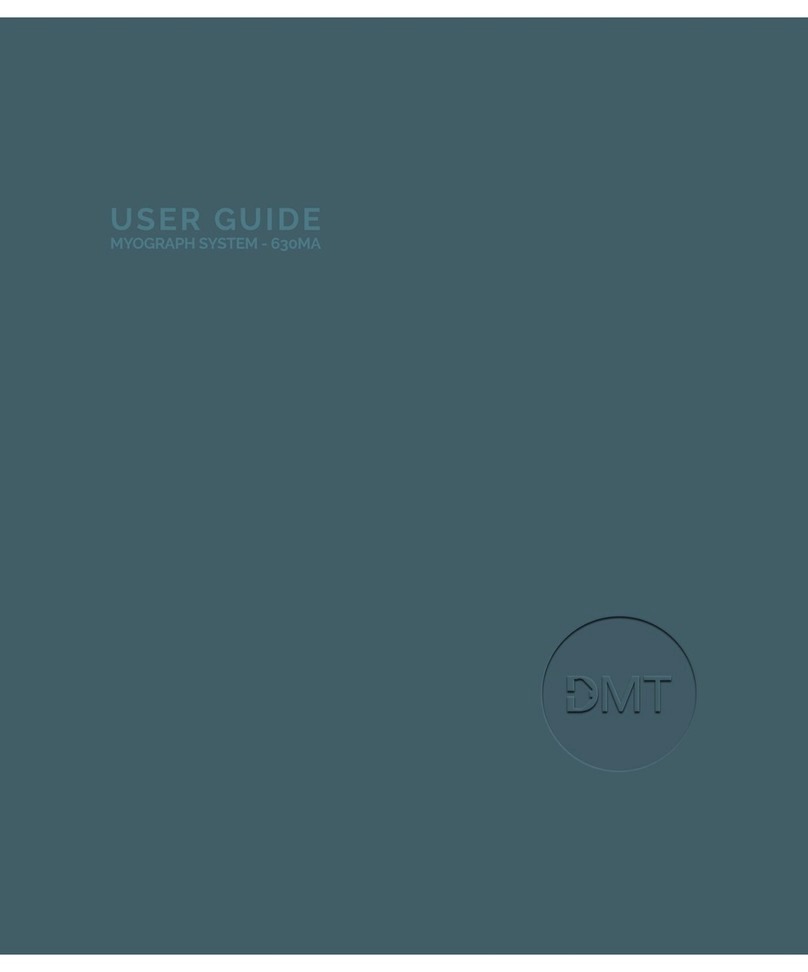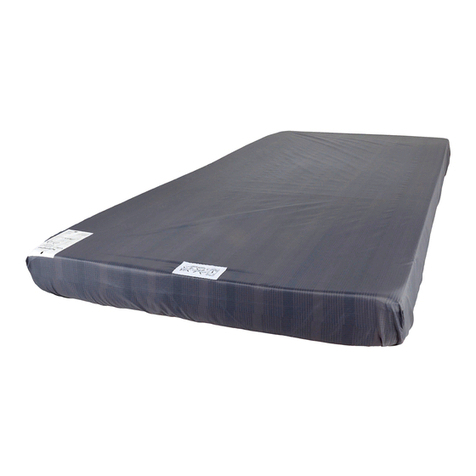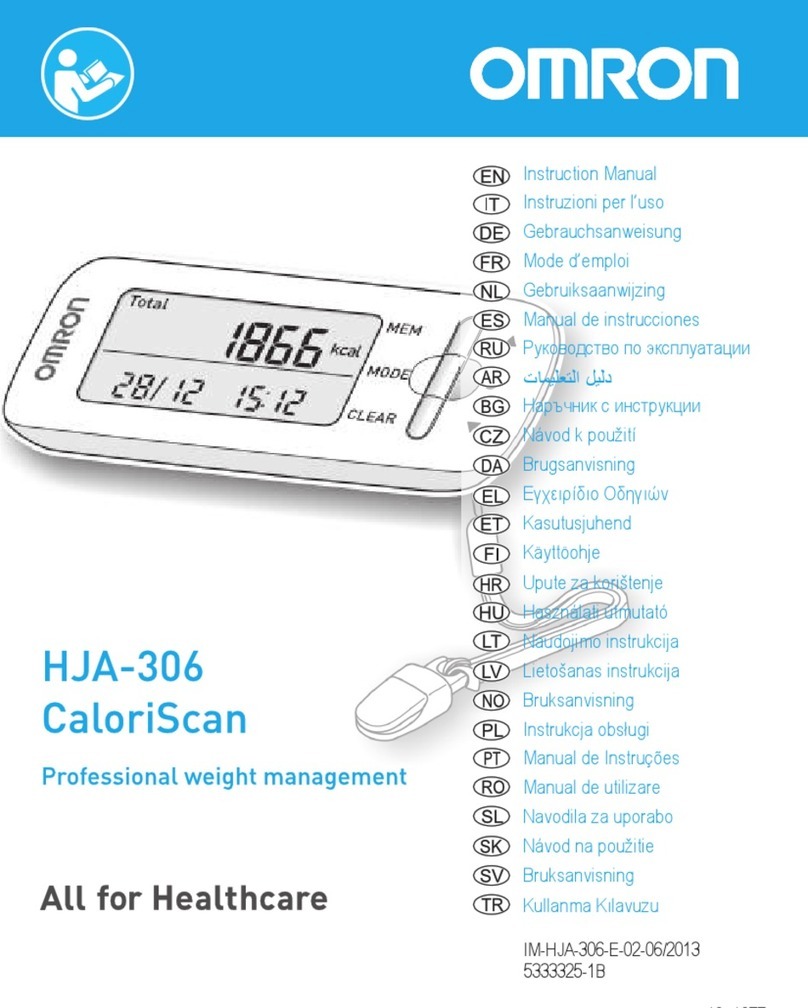
™ 595 Regional Analgesia Infusion Pump Operation Manual Rev 2.3 October 2013
OPERATING PRECAUTIONS
Although the BodyGuard pump has been designed and manufactured to exact specifications, it is not
intended to replace trained personnel in the supervision of pain management infusions.
CME Medical will assume no responsibility for incidents which may occur if the product is not used,
stored or transported in accordance with the environmental conditions stipulated in this document
and on the package labelling.
This infusion pump is designed for ambulatory use, and should withstand everyday handling. If the
pump is dropped onto a hard surface, or is suspected of being dropped, the operation and calibration
should be checked by a qualified technician.
Do not bathe or shower whilst using the pump or immerse into liquid. The pump is resistant to a lim-
ited amount of splashing, but its construction does not make it resistant to large amounts of spraying
or immersion in liquids. Damage to the internal components may result.
•
The BodyGuard pump should be operated within a temperature range of +18ºC (+59ºF) to +45ºC
(+113ºF) and up to 85% humidity. Operating the pump at temperatures and or humidity other than
within that range may affect accuracy.
Do not operate the pump near high-energy radio-frequency emitting equipment, such as electro-
surgical cauterising equipment. False alarm signals may occur.
INFUSION PRECAUTIONS
Always read and follow the instructions which accompany the administration sets. Carefully follow
the instructions for priming the set, as well as the recommended set change interval.
The fluid bag and administration set should be disposed of in an appropriate manner, considering the
•
nature of the residual fluid that may be contained within, in accordance with the hospital homecare
provider’s disposal practices.
Drugs for infusion by use of the pump may only be prescribed by a qualified medical practitioner.
Caution must be exercised in the selection of drugs and the amount and rate intended to be delivered
via any infusion pump.
If the drug contained in the fluid bag will be exposed to extreme environmental conditions for pro-
longed time periods, it is important to select drugs that will not change pharmacologically upon such
exposure.
As with all automatic infusion devices, whenever a toxic or dangerous level of drug is stored in the
reservoir, constant monitoring of the infusion is required.
In all applications, time to alarm under occlusion or other fault conditions will depend on the infusion
rate and levels of alarm settings. It is recommended to consider these parameters when using drugs
requiring infusion stability or low flow rates, and therefore a quick time to alarm.
Disposables must be compatible with the medicine delivered.
When operating the pump on patient controlled programme with a rate of 0.00ml h there is a hazard
of blood clot forming. Connecting a clear fluid infusion in parallel will avoid this problem.
GENERAL PRECAUTIONS
Do not use hard or sharp objects on the keypad.
The specified accuracy of the pump can only be maintained if the pump is used, maintained and ser-
viced in accordance with the instructions given in this manual. If the pump has failed to calibrate dur-
ing the servicing procedure, it must be returned for repair or disposal.
If the pump is dropped, subjected to excessive moisture, humidity or high temperature, or otherwise
suspected to have been damaged, remove it from service for inspection by qualified personnel.
The pump has been designed to be as safe as possible to handle; however, care should be exercised
to avoid trapping of fingers or other body parts in the mechanism.




















